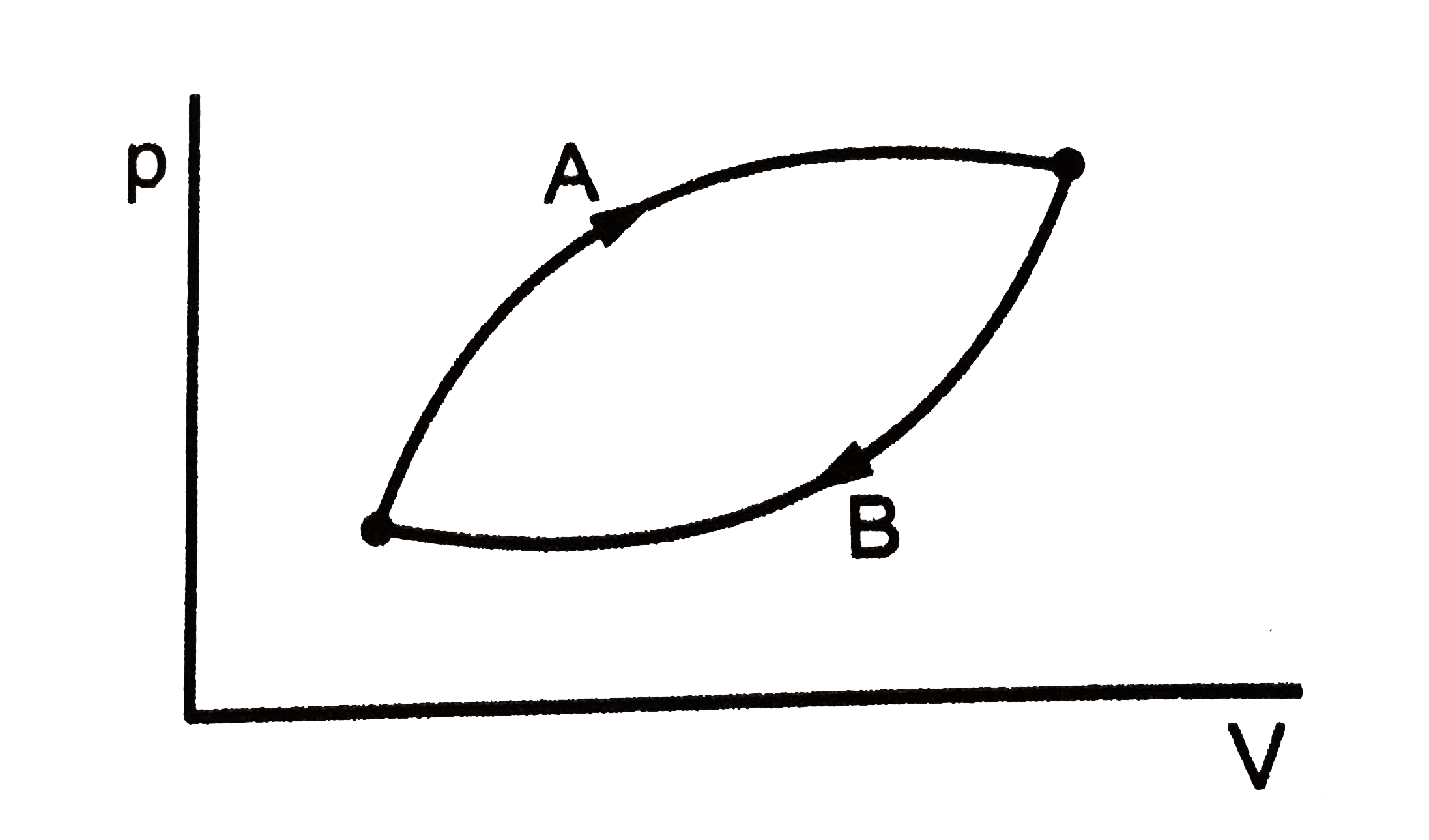What is the change in internal energy of a system undergoing a cyclic process, at the end of a cycle ?
To solve the question regarding the change in internal energy of a system undergoing a cyclic process, we can follow these steps:
1. Understanding Internal Energy:
Internal energy (U) is a property of a system that depends on the state of the system. It is a state function, meaning it only depends on the current state of the system and not on how it got there.
2. Cyclic Process Definition:
In a cyclic process, the system returns to its initial state after completing a cycle. This means that the initial and final states of the system are the same.
3. Change in Internal Energy:
The change in internal energy (ΔU) can be expressed mathematically as:
ΔU=Ufinal−Uinitial
Since the system returns to its initial state at the end of the cycle, we have:
Ufinal=Uinitial
4. Calculation of Change in Internal Energy:
Substituting the equality from the previous step into the equation for change in internal energy gives:
ΔU=Uinitial−Uinitial=0
5. Conclusion:
Therefore, the change in internal energy of a system undergoing a cyclic process at the end of the cycle is:
ΔU=0
Final Answer:
The change in internal energy of a system undergoing a cyclic process at the end of the cycle is 0.
---
Internal energy (U) is a property of a system that depends on the state of the system. It is a state function, meaning it only depends on the current state of the system and not on how it got there.
In a cyclic process, the system returns to its initial state after completing a cycle. This means that the initial and final states of the system are the same.
The change in internal energy (ΔU) can be expressed mathematically as:
ΔU=Ufinal−Uinitial
Since the system returns to its initial state at the end of the cycle, we have:
Ufinal=Uinitial
Substituting the equality from the previous step into the equation for change in internal energy gives:
ΔU=Uinitial−Uinitial=0
Therefore, the change in internal energy of a system undergoing a cyclic process at the end of the cycle is:
ΔU=0
The change in internal energy of a system undergoing a cyclic process at the end of the cycle is 0.
Topper's Solved these Questions
- INTERNAL ENERGY BOOK - ICSECHAPTER - INTERNAL ENERGY EXERCISE - SELECTED PROBLEMS (FROM FIRST LAW OF THERMODYNAMICS )
6 Videos
- INTERNAL ENERGY BOOK - ICSECHAPTER - INTERNAL ENERGY EXERCISE - SELECTED PROBLEMS (FROM ISOTHERMAL AND ADIABATIC PROCESSES )
10 Videos
- INTERNAL ENERGY BOOK - ICSECHAPTER - INTERNAL ENERGY EXERCISE - SHORT ANSWER QUESTIONS
30 Videos
- GRAVITATIONBOOK - ICSECHAPTER - GRAVITATIONEXERCISE - FROM THE HUBBLE TELESCOP
2 Videos
- MOTION IN FLUIDS BOOK - ICSECHAPTER - MOTION IN FLUIDS EXERCISE - SELECTED PROBLEMS (FROM POISEUILLE.S FORMULA)
19 Videos
Similar Questions
What is the change in the internal energy of a system over one complete cycle of a cyclic process?
View SolutionHow will you find the change in internal energy of a system when it melts ?
View SolutionRefer to figure. Let ΔU1 and ΔU2 be the changes in internal energy of the system in the processes A and B. then
View SolutionIf Q, E and W denote respectively the heat added, change in internal energy and the work done in a closed cycle process, then
View SolutionRefer to figure. Let ΔU1 and ΔU2 be the changes in internal energy in the system in process A+B and ΔW be the net work done by the system in the process A+B,

View SolutionCalculate the changes in internal energy of a system if,
400 calorie of heat energy are added to the system and the system does 500 calories of work on the surroundings.
View SolutionChange in internal energy in an isothermal process for ideal gas is
View SolutionWhat is the change in internal energy if 10 J of heat is given to system at constant pressure and 20 J of work is done by the system?
View SolutionCalculate the changes in internal energy of a system if,
300 J of heat energy is added to the system and a work of 160 J is done on the system.
View SolutionPredict the change in internal energy for an isolated system at constant volume.
View Solution
